When we think about successful business, we tend to think about top line revenue, robust resources and strong market positioning. We think about high performing widgets, first to market innovations and strong multiples on the sell.
What if successful business was evaluated on team continuity, an environment where people felt empowered and a place where all involved could flourish toward a common goal… achieving individual personal and professional milestones? All a while, maintaining healthy earnings, capturing your markets attention and continuously improving performance?
What if company related functions began with expressing an attitude of gratitude for what already was and is? What if we not only thought it but expressed it? Could you imagine a team of individuals, vastly different from one another, with very different thought patterns, different learning styles and different coping mechanisms, coming together and succeeding for the greater good of the team?
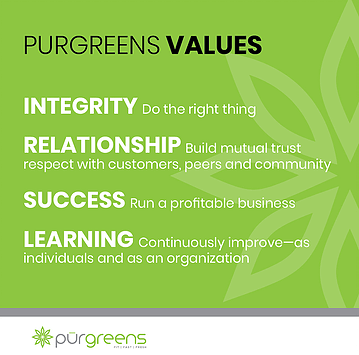
What is culture? What do we think about when we hear the word culture? What does it feel like to participate in a company that exudes a strong culture? Culture by definition, is a group of people with a common set of values and beliefs. We can all probably relate to understanding what culture is, and similar to trust, culture is a human experience. When we are surrounded by principles, beliefs and attitudes that reflect what we believe, we create environments that promote, empathy, trust and safety- the foundations of a strong, successful culture. In our “Growing Up PUR” Culture, the focus is on deeper issues connected to how our team feels, and how we behave as a result of those feelings. We focus on our teams ability to build their capacity to see through dark spots; acknowledge insecurities and shortcomings rather than unconsciously acting them out. What’s the outcome? We spend less energy defending our personal value and more energy creating external value. How people feel — and make other people feel — becomes as important as the performance impact they have on your business.
Let’s take a look at the foundations of culture.
Empathy
Represents our ability to understand someone else’s thoughts and feelings. In other words, demonstrating compassion toward another individual. I’ve learned that empathy is developed on an individual level. It won’t (and shouldn’t) come from your company handbook or even your leadership team. Because empathy is an individual skill that is learned over time and through personal experience, our goal as organizational leaders is to provide platforms to encourage further empathy development. Ask yourself these questions:
- How well do you listen to your team? When questions and concerns are posed, do you actively listen to there comments/feedback?
- What type of questions do you ask your team? Are they thoughtful and specific? Do the tones of your questions portray understanding, concern and compassion?
- Have you walked a day in their shoes? Do you really understand what their daily task list consists of? Are you aware of their requirements outside of the specific role they play for you?
When we’re hyper focused on profits and productivity, it’s easy to lose sight of how we make each other feel. Stay connected to empathy, it’s critical to retention and your organizations long term success.
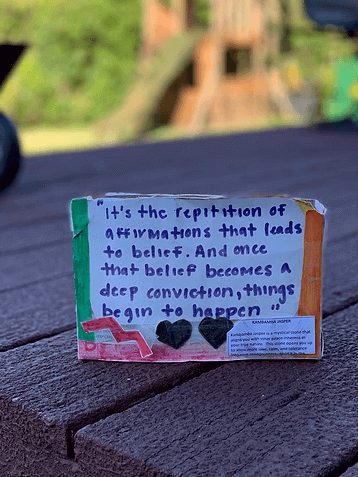
Practical Application
On a monthly basis I gather my leadership team and we huddle for an afternoon. The huddle has almost nothing to do with the current position of the business. It’s not about cash flows, key performance indicators or budgets. It’s an opportunity to gather over a meal and a few team building exercises. I’ve found that these interactions, outside of our traditional setting, creates an experience with each other that translates positively into their future work productivity. Our exercises have included things like: Affirmation boxes, I got your back exercises, ICARE mission statements and many other activities focused on creating empathy, trust and safety.
Vulnerability
The ability for people to connect on a different level, which can lead to increased collaboration, productivity, and cohesiveness. Being vulnerable means having the ability to build connections with our peers through real, honest conversations. Having open, non-judgmental conversations that helps to foster environments of cohesiveness and teamwork. The ability for your team to display vulnerability creates an environment where your team feels safe enough to stand up and say ” I don’t know what I’m doing”. In those vulnerabilities, our professional environments can become more conducive to real connections, growth, and opportunities and increase trust, engagement, and respect, all of which are critical to organizational long term success.
Practical Application
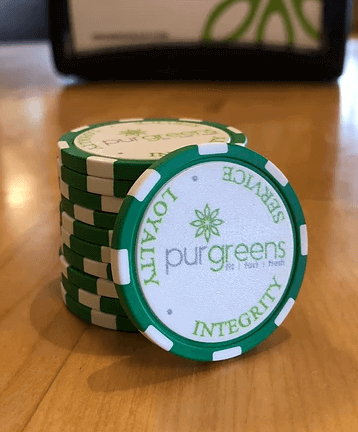
We use many forms of active and engaged communication, but none as important as our weekly “Monday Memo”. In these memos, which connect everyone from the owners of the business to the line staff, we open up our communication about current initiatives, up coming events, team weekly goals, Purchip winners and company directives. The memos are communicated in such a way to encourage open honest communication. To expose and discuss constructively, whats working well and not so well. These communications are safe and create space for vulnerability.
Trust
A firm belief in the reliability, truth, ability, or strength of someone or something. It’s too often that we hear our family, friends and even professional peers say under their breath, “I don’t REALLY trust him/her”. The ability to build trust that lasts begins with creating a sense of belonging. A space where people feel like they can connect to an experience, to their peers and to their work. When people know why they do something … when they trust in the leadership team out in front of the decision, we’re more likely to create positive experiences for that person through the task, decision, spreadsheet, your asking them to complete. Trust is a feeling that creates security in self value while at the same time, security in the task at hand. Security that, someone’s got your back if you make a mistake. Security that your trust isn’t diminished because the outcome was different than the one expected. In leadership roles, I challenge you to answer these questions about yourself:
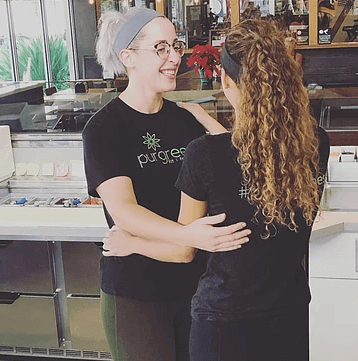
- Are you dependable? Do you do what you say and say what you do?
- Are you believable? Do you act in a consistent values driven manor that reassures your team that they can rely on you?
- Are you connected? Great leaders need to be connected to their teams by understanding their needs, participating in their daily job routines (yes, for me that means cutting onions and mopping the floors), and being accessible…especially in times of turmoil.
Building and maintaining trust is imperative for any personal or professional relationship to thrive. But trust is delicate and must be nurtured, practiced and measured to ensure that it doesn’t vanish when those poor decisions or miscommunications occur, because, news flash… they will! Building trust is the framework to achieving high levels of performance and drives the team toward a common goal.
Practical Application
One of my favorite team building activities is the human knot. I’ve been using this exercise for several years, with many different teams and during the debrief, there’s always something new that results from that particular group. The exercise asks a group to stand in a circle and extend 1 hand into the center to meet anthers hand. Once locked, you cross the other arm over the connect you just made to form the second connection. The challenge is to become untangled without letting go of any hands your holding onto. As your group moves through the exercise, take note of the communication, trust, leadership, cooperation and problem solving skills that surface. During the debrief, ask your group the following questions?
- How did you feel about the close proximity that you were in with your team?
- Did anyone lead the team at any time or did everyone work on his/her own?
- Do some groups work better when there is a leader? Why?
- How does leadership or lack thereof impact your group’s ability to communicate effectively?
- What “knots” need to be unraveled in your group to help you be successful?
- Was there trust established throughout the exercise? What made you form that trust?
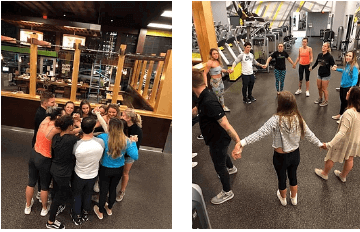
Safety
The condition of being protected from or unlikely to cause danger, risk, or injury. When I think about creating organizational safety I think about a lecture I’ve listened to hundreds of times. It’s a 3 minute Simon Sinek talk titled: “Why Good Leaders Make You Feel Safe”. Sinek focuses on the ability for leaders to create a Circle of Safety. External threats, whether they are driven by competition, unpredictability, market pressures… they are always going to be consistent. What’s variable, are the dangers inside your organization and this is where the circle of safety is critical.
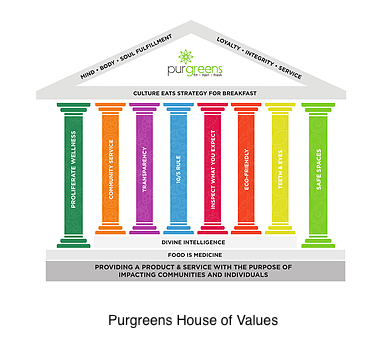
If we in leadership roles, are able to keep our team safe internally, we are much more likely to work together, trust each other and cooperate to face the dangers externally. So how can we create circles of safety to promote innovation and minimize the fear that team members might loose their position if they fail? We align our teams with a belief system that mirrors our own. Attract people who share our values and people who believe what we believe. And then, we extend our circle from the most Senior member to the most junior member. When people feel safe, they naturally cooperate and trust each other. If our team has to invest their energy internally to protect themselves and create safety, they are taking away from the energy that could be applied externally and that energy is what drives success.
Practical Application
bout once a quarter, every single member on my team, including the ownership team, gets an opportunity to complete a performance review on each other in our positions. It’s not so much the exercise that’s important but rather the discussion that results from the critiques. I never make this assignment mandatory, it’s always optional. Furthermore, it’s always anonymous if completed. It’s interesting, to see who on your team chooses not to complete the exercise. What does that say about your ability to make this team member feel safe? Is it a reflection of their ability to trust you… trust their team? What’s your personal relationship with this individual like? Are they fearful of how their comments will be processed? What usually results from the completed reviews, are very open and honest opportunities to grow and get better personally and professionally. It also allows us to express the gratitude we get from those that we work closest with. The gratitude and compassion within these reviews is the most gratifying reward and indicator that your team feels safe. Through completion of these reviews, you in a leadership role, get a very honest look at the work you’ve been able to accomplish within your team. Rejoice in the successes and evolve through the weaknesses.
*Email me for a template you can incorporate into your team.
Whether you are looking to develop a culture from the ground up or you’ve mastered the strategy on rooting culture within your organization, there’s always something to learn through others experiences to improve our own. I’ve been blessed by great leaders in my young career and will always have a passion to continue passing my knowledge on to influence and encourage others.
“If a brand doesn’t live on the inside, it will never thrive on the outside.”

